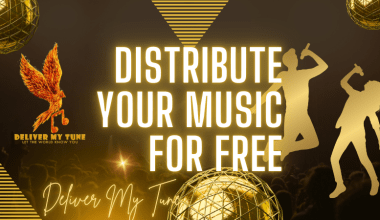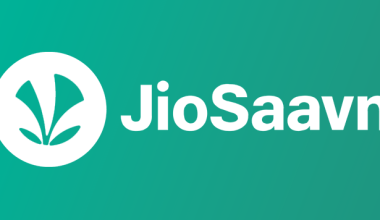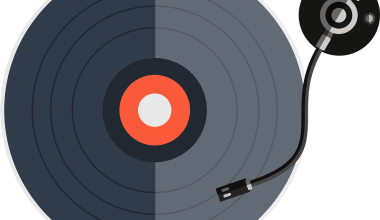Getting your music out to the world is easier than ever. You don’t need to rely on a distributor to share your music on popular streaming platforms like Spotify, Apple Music, and Tidal. In this guide, we’ll walk you through the process of distributing your single on all streaming platforms without a distributor.
Why Distribute Your Single Independently?
Many artists think they need a distributor to get their music on streaming services, but that’s not true. Handling distribution on your own has many advantages. First, you maintain complete control over your music and its earnings. Second, you don’t have to pay hefty fees or commissions to a third-party company. And lastly, you gain valuable experience in managing your music career.
Getting Your Music Ready for Distribution
Before you begin, make sure your track is professionally recorded, mixed, and mastered. High-quality audio is essential because streaming platforms have specific standards. You’ll want your single to sound great on all devices, from smartphones to high-end speakers.
Choose the Right Audio Format
Most streaming services accept formats like WAV and FLAC. These formats provide high-quality sound without compression loss. Always export your music in the highest resolution possible to ensure the best listening experience.
Create Eye-Catching Cover Art
Your cover art is the first thing potential listeners see, so it needs to stand out. Use high-resolution images and make sure they align with the platform’s requirements. Typically, artwork should be at least 3000 x 3000 pixels and in JPEG or PNG format.
How to Upload Your Music to Different Platforms
Uploading your single to streaming platforms without a distributor might take a little effort, but it’s definitely doable. Each platform has its own guidelines, and following them correctly ensures your music gets approved without delays.
Uploading to Spotify
Spotify allows independent artists to upload their music through Spotify for Artists. To do this, you’ll need to sign up, verify your account, and follow their step-by-step process. Once your music is uploaded, you can monitor streams and audience insights.
Adding Your Single to Apple Music
Apple Music provides an option for independent artists through Apple Music for Artists. The process involves creating an Apple ID, registering your artist profile, and submitting your music directly.
Getting Your Music on Tidal
Tidal also offers a way for independent artists to get their music on their platform. You’ll need to reach out to their support team and follow their submission process, which includes providing metadata, artwork, and your track file.
Metadata Matters
Metadata is crucial when distributing your single. It includes information like your artist name, song title, album title, genre, and release date. Providing accurate metadata ensures your music is easily discoverable by listeners.
Writing a Compelling Artist Bio
Your bio is an important part of your online presence. A well-written bio tells your story and connects with your audience. Include details about your music journey, influences, and what inspires your work.
Promoting Your Single After Distribution
Once your music is live, the work doesn’t stop there. Promotion is key to reaching new listeners and growing your fanbase.
Platforms like Instagram, TikTok, and Twitter are great for promoting your single. Share snippets, behind-the-scenes content, and engage with your audience to build excitement.
Submit to Playlists
Getting featured on playlists can boost your streams significantly. Reach out to playlist curators, submit your song to independent playlists, and encourage your fans to add your track to their personal playlists.
Collaborate with Influencers
Partnering with influencers or bloggers in the music industry can help spread the word about your single. A simple shout-out from a popular account can introduce your music to thousands of potential fans.
Monitoring Your Performance
After you’ve distributed your single, it’s important to track its performance. Most streaming platforms provide analytics tools to help you understand listener demographics, popular locations, and engagement levels.
Adjusting Your Promotion Strategy
If you notice that your single is gaining traction in a particular region, you can focus more promotional efforts there. Adjusting your strategy based on data helps you maximize your reach and impact.
Monetizing Your Music
Distributing your single independently also opens up monetization opportunities. Streaming platforms pay royalties based on the number of streams your song gets. Additionally, you can explore other revenue streams like merchandise sales, live shows, and direct fan support through platforms like Patreon.
Registering with a Performing Rights Organization
To ensure you get paid for every stream and public performance of your music, register with a performing rights organization (PRO) like ASCAP or BMI. These organizations collect royalties on your behalf.
Final Thoughts
Distributing your single on all streaming platforms without a distributor might seem challenging at first, but with the right approach, it’s completely possible. By taking control of your music distribution, you gain independence and a deeper understanding of the industry.
Now that you know how to distribute your single on all streaming platforms independently, it’s time to take action. Start by preparing your track, choosing the right platforms, and promoting your music effectively. Soon, your single will be reaching listeners around the world!
Related Articles:
For further reading, explore these related articles:
- How to Release Your Single on iTunes and Start Earning Money
- How to Release Your Single on iTunes Easily
For additional resources on music marketing and distribution, visit DMT RECORDS PRIVATE LIMITED.






